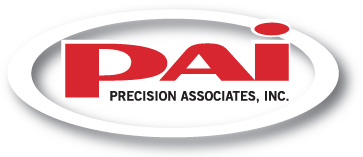Rubber seals are used in numerous industries to prevent the unwanted leakage of liquids and gases in various components such as pumps, valves, pipe fittings, and vacuum seals, to name only a few. However, all seals are not created equally. Rubber seal design consists of several elements to ensure that the seal delivers optimal performance in the given environment.
One of the most common types of industrial rubber seals, the O-ring, relies on mechanical compressive deformation to act as a barrier between mating surfaces, thus restricting the flow of fluid in predetermined areas. Several factors must, therefore, be taken into account in O-ring seal design to sustain the compressive force and maintain an effective seal.
Key Design Considerations
Rubber seals are available in a large number of material compositions, each with its own set of advantages and limitations. The selection of the appropriate material involves the consideration of specific factors including:
- Dimensional Requirements
To provide a proper seal, the O-ring needs to be compressed between the mating surfaces. The deformation caused by this compression is what prevents fluid leakage. To achieve the proper compressive force and deformation, the cross section of the O-ring needs to be sufficiently larger than the gland depth.
As the two mating surfaces press together, the O-ring seal compresses axially and exerts an equal and opposite force at the top and bottom ends of the seal. If the O-ring is too small, the seal may not compress when the surface come together. On the other hand, an O-ring that is too large will over pack the gland and disrupt the connection between the mating surfaces.
- Friction
Friction considerations are essential in dynamic applications – in situations that involve relative movement between the mating surfaces.
In reciprocating applications these movements can generate frictional forces which may cause failure due to abrasion or extrusion and successive nibbling of the seal. In rotary applications friction may generate excessive heat and seal expansion due to the Joule effect. In both of these applications, proper groove design, along with appropriate lubrication and speed of operation can help to avoid these issues. Silicone and related materials such as Fluorosilicone, liquid silicone rubber, and medical grade silicone are often avoided in dynamic applications due to their low abrasion/tear resistance.
- Temperature
Long-term exposure to excessive heat can cause inappropriate O-ring materials to deteriorate physically or chemically over time. Excessively high temperatures can cause specific materials to swell and harden, resulting in permanent deformation. Conversely, overly cold temperatures may cause material shrinkage and result in leakage due to loss of seal contact, or insufficient compressive force due to stiffening of the rubber compound.
Therefore, the appropriate seal material should be selected to withstand the expected temperature ranges of the environment. The length of exposure should also be considered. For example, would the temperatures be sustained in short intervals or at sustained levels?
- Pressure
Differential pressures tend to push O-rings to the low-pressure side of the gland causing it to distort against the gland wall. This action blocks the diametrical gap between the mating surfaces and results in the formation of a positive seal. Excessively high pressures can cause softer O-ring materials to extrude into the diametrical gap resulting in permanent seal failure and subsequent leakage. To avoid this situation, seal materials that operate optimally within the expected temperature range should be selected.
- Chemical Compatibility
One of the most critical considerations for O-ring design and material selection is determining the material’s resistance to exposure to specific chemicals. Some fluids can react negatively with certain materials while having little to no effect on another. For example, Nitrile is highly resistant to petroleum-based oils and fuels, while the use of Butyl is avoided in applications with exposure to petroleum and other hydrocarbon-based solvents due to its poor resistance.
Learn More
At Precision Associates Inc., we stock an extensive inventory of seal materials for a multitude of applications. Our technical team is highly qualified and knowledgeable in rubber seal design, and they regularly assist our customers in selecting appropriate materials for various exposure conditions and specific applications. Our in-house chemists also have the ability to custom-formulate specific polymer and elastomeric material combinations for unique conditions and resistances.
For over 60 years we have been a leading manufacturer of rubber seals for numerous industries. Our ISO 9001:2015 certified quality management systems ensure that our products are manufactured to meet or exceed industry standards.
If you would like to know more about our standard rubber seals or custom molded seals, feel free to contact us for more information.

Leave A Comment
You must be logged in to post a comment.